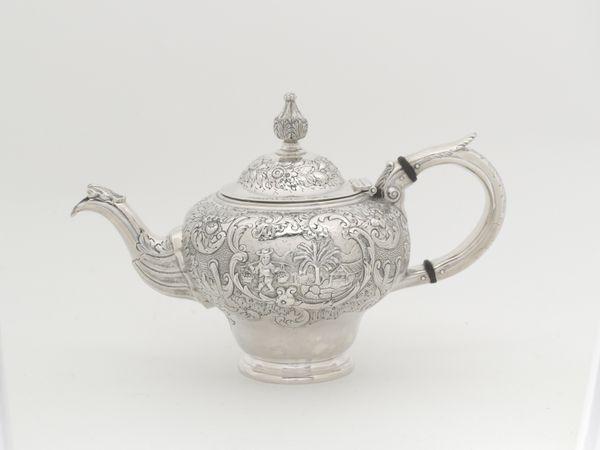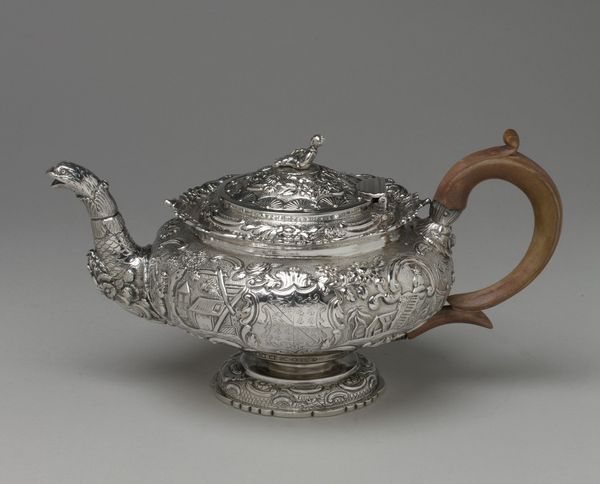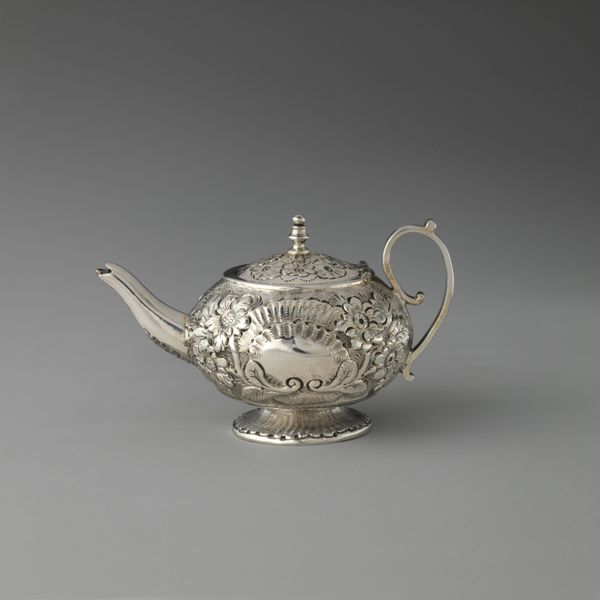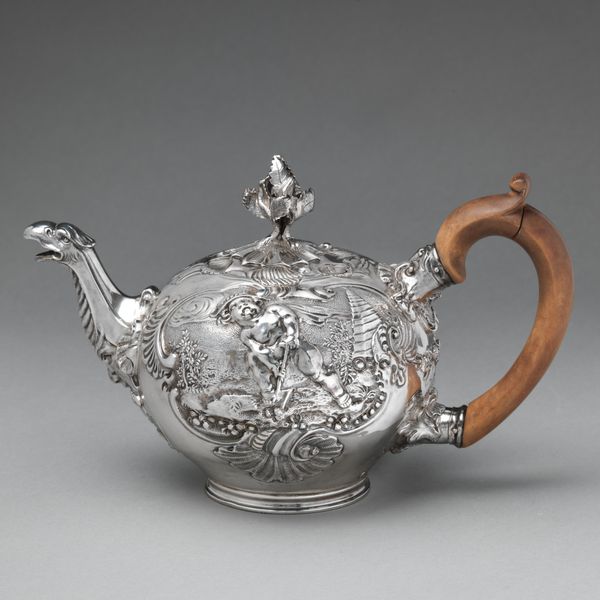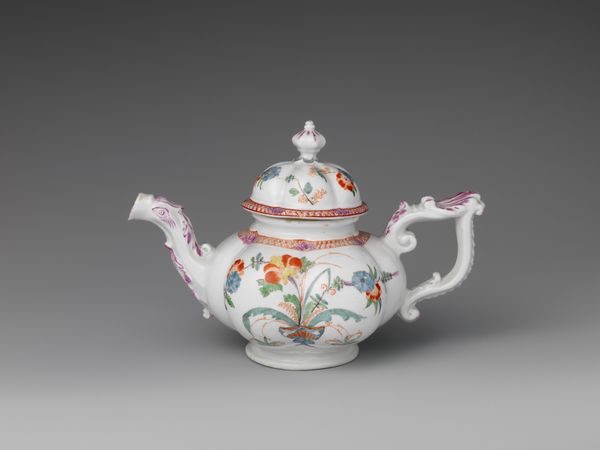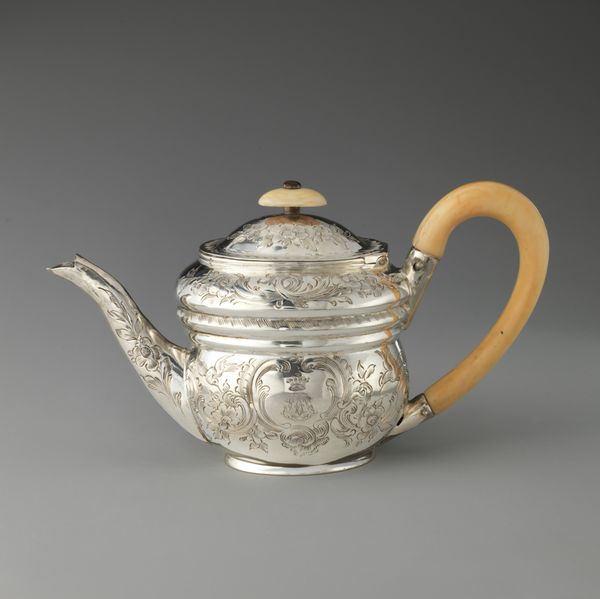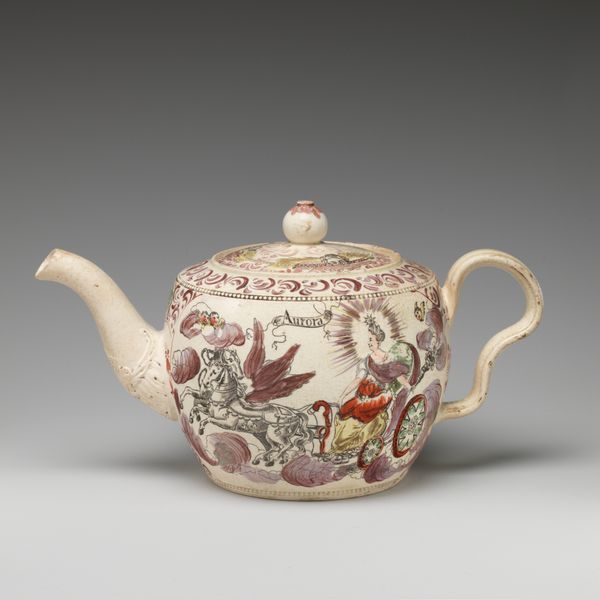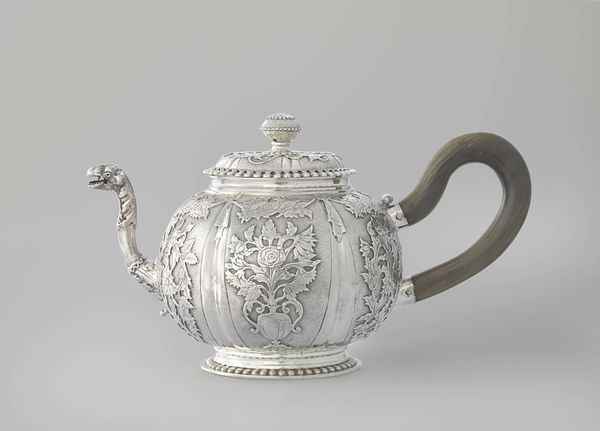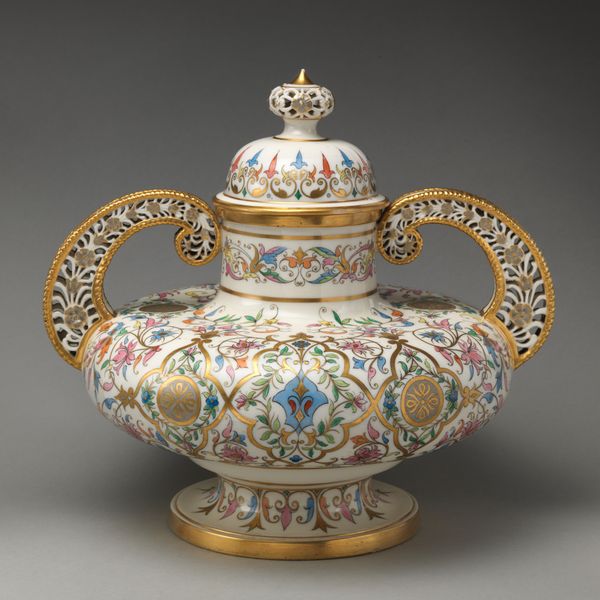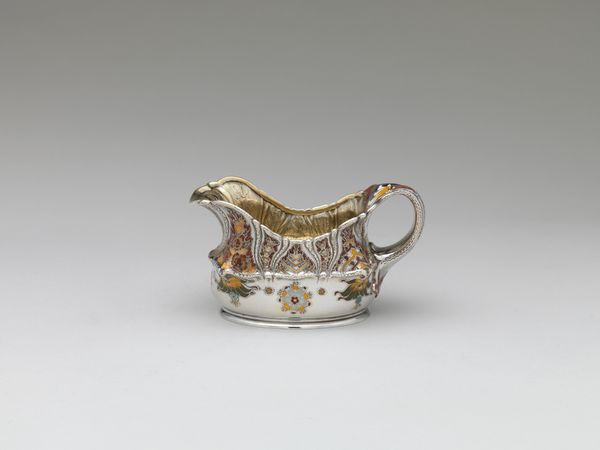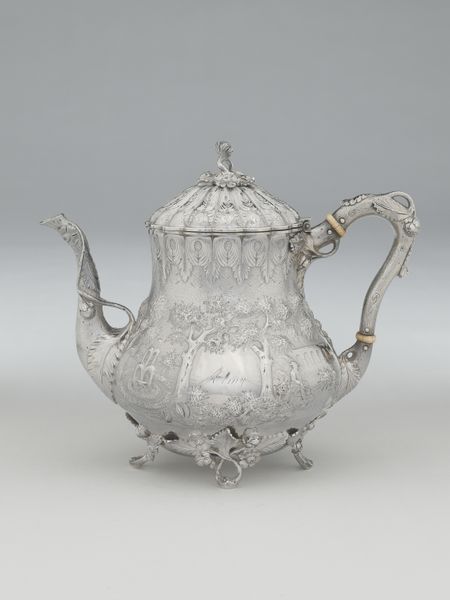
silver, metal, ceramic
#
silver
#
metal
#
ceramic
#
ceramic
#
united-states
#
decorative-art
Dimensions: 4 3/4 x 10 7/8 x 5 3/16 in. (12.1 x 27.6 x 13.2 cm); 12 oz. 13 dwt. (393 g)
Copyright: Public Domain
Curator: Here we have a "Teapot" crafted between 1882 and 1892 by Tiffany & Co., a dazzling blend of silver and ceramic that exemplifies decorative art from the United States. Editor: Oh, it's ornate! My first thought goes to its decadence and a possible colonial narrative around consumption and taste. Is this silver work referencing some other culture or power structure through its decoration? Curator: Precisely! Tiffany & Co.'s production model at this time relied heavily on skilled immigrant labor, particularly European artisans. Considering its aesthetic complexity, how would examining this piece through the lens of class and the exploitation of labor practices shed light on its creation? Editor: It demands a deeper investigation into the socio-economic conditions surrounding its creation. Beyond just admiring the craftsmanship, what were the conditions like for the metalworkers, the ceramicists, the designers involved? What cultural influences are embedded in those patterns, and who benefitted most from that labor? Curator: The silver and ceramic used also point to issues of extraction, global trade networks, and access to resources. How does knowing Tiffany & Co. also sold mass-produced wares impact your interpretation of this individual handmade object? Does it raise questions around access and who the tea set was intended for? Editor: Absolutely. It was meant to signify status and aspiration. Understanding its role within structures of privilege also unveils deeper layers: the social rituals enacted around the act of tea drinking, or the politics of displaying wealth through such meticulously crafted, yet ultimately functional, objects. Curator: By analyzing its materials and manufacture we start to deconstruct a vision of refined taste as also connected to systems of power. It is fascinating how something so beautiful holds complex layers concerning its making. Editor: Indeed. Examining it through both its form and socio-political underpinnings forces us to acknowledge the broader historical tapestry within which such artistry took shape. This tea set tells more stories than tea.
Comments
No comments
Be the first to comment and join the conversation on the ultimate creative platform.

